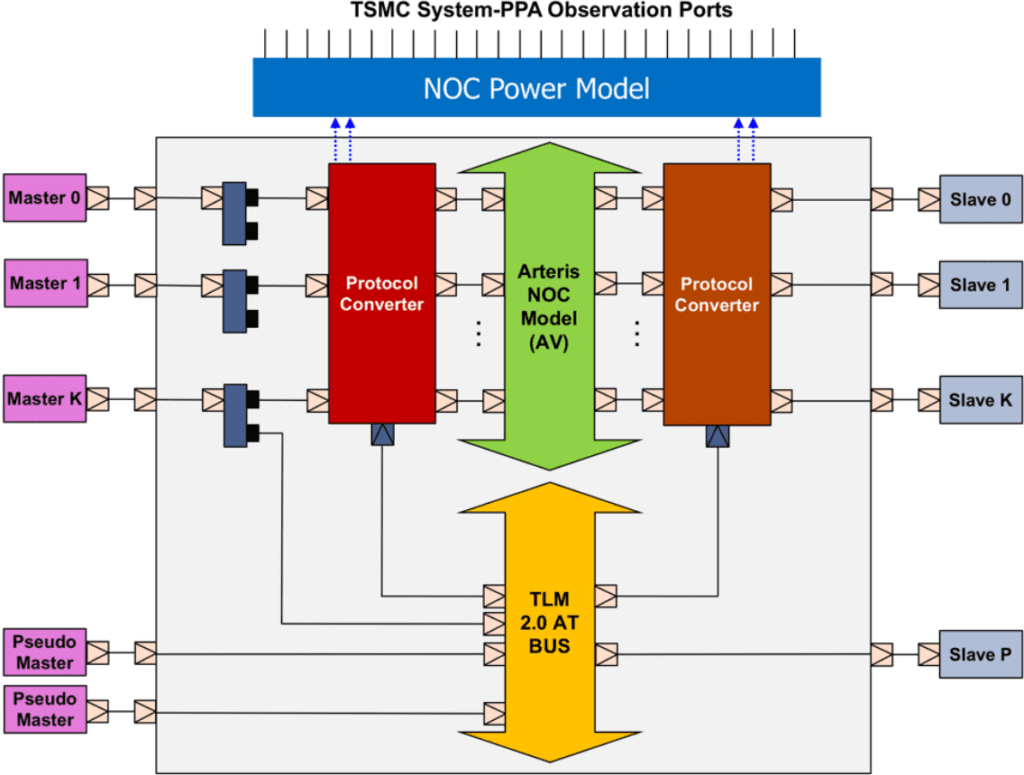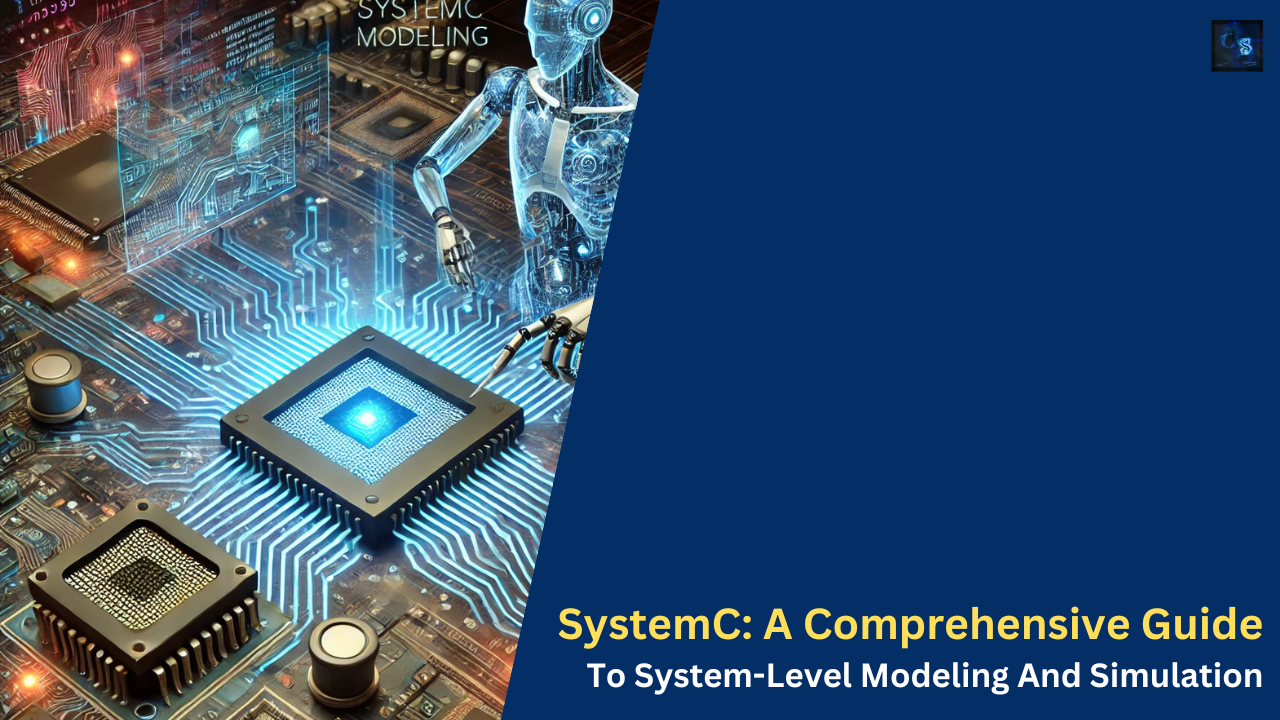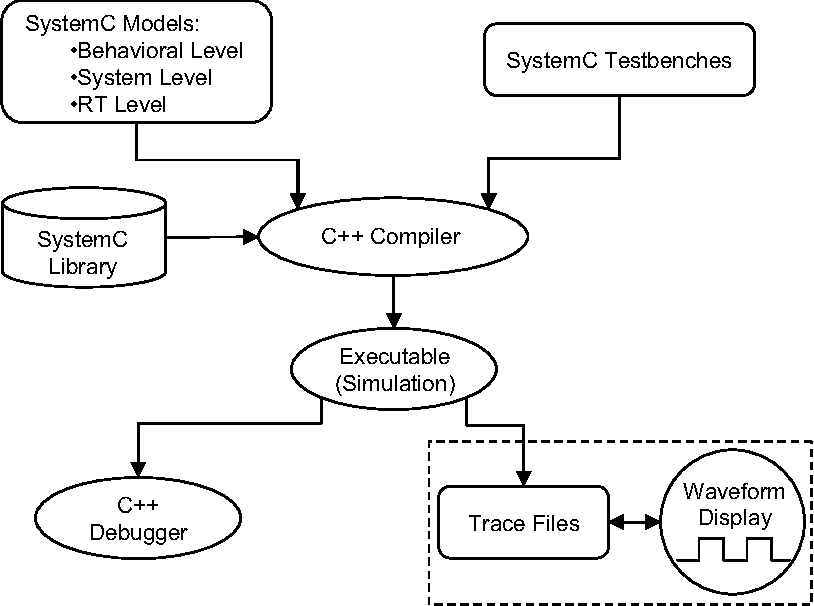What Is SystemC: A Comprehensive Guide To System-Level Modeling And Simulation
Hello guys, welcome back to our blog. In this article, I will discuss SystemC for system-level modeling and simulation, its purpose, key features, and applications.
Ask questions if you have any electrical, electronics, or computer science doubts. You can also catch me on Instagram – CS Electrical & Electronics
- Adaptive AUTOSAR Vs Classic AUTOSAR: Which One For Future Vehicles?
- How V2X Communication is Transforming Connected Vehicle Technology
- Comparing Embedded Coder, Simulink Coder, And MATLAB Coder In Automotive Applications
SystemC: A Comprehensive Guide To System-Level Modeling
SystemC is a powerful system-level modeling language used for designing and simulating hardware systems. Built on top of C++, it enables engineers to model, simulate, and verify complex electronic systems at various abstraction levels. With the increasing complexity of System-on-Chip (SoC) designs and embedded systems, SystemC provides an efficient way to bridge the gap between hardware and software design.
This article provides an in-depth guide to SystemC, its applications, fundamental concepts, and its role in the modern semiconductor industry.
Understanding SystemC

What is SystemC?
SystemC is an open-source C++ library that enables modeling and simulation of hardware components at the system level. It extends C++ with specialized constructs to describe parallelism, timing, and concurrency, which are essential for hardware design.
Key Features of SystemC:
- Hardware-Software Co-Design
- High-Level Synthesis (HLS)
- Transaction-Level Modeling (TLM)
- Timing and Concurrency Management
- Power and Performance Analysis
Comparison: SystemC vs Traditional HDLs (Verilog/VHDL)
Unlike Verilog and VHDL, which focus on Register Transfer Level (RTL) design, SystemC operates at higher levels of abstraction, making it more suitable for early-stage modeling and software-hardware integration.
Applications of SystemC

01. System-Level Modeling: SystemC enables designers to create high-level abstract models of hardware components, which can be used for early validation before implementation.
02. Electronic System-Level (ESL) Design: SystemC helps in designing complex SoCs by providing a modular and scalable approach to modeling processors, memory, and communication interfaces.
03. Hardware-Software Co-Design: Using SystemC, developers can simulate and test embedded software on a virtual hardware model, significantly reducing development time.
04. High-Level Synthesis (HLS): SystemC can be used to generate RTL descriptions automatically, reducing the effort required for manual HDL coding.
05. Architecture Exploration & Performance Analysis: By simulating different architectures, engineers can evaluate the performance and power consumption of a system before finalizing the design.
06. Transaction-Level Modeling (TLM): TLM allows fast simulation by abstracting away low-level hardware details, making it ideal for functional verification and early software development.
Applications in the Automotive Domain
01. SystemC is widely used in the automotive industry for modeling and simulating various vehicle electronic control units (ECUs). Some key applications include:
02. ADAS (Advanced Driver Assistance Systems): SystemC is used to model and simulate sensor fusion, real-time decision-making, and communication between ECUs.
03. Powertrain Control: Helps in developing and testing engine control units (ECUs) for optimizing fuel efficiency and emissions.
04. Battery Management Systems (BMS): Enables simulation of battery performance, state-of-charge (SoC), and state-of-health (SoH) algorithms.
05. In-Vehicle Networks (IVN): SystemC is used to model and verify CAN, LIN, and Ethernet-based automotive communication systems.
06. Autonomous Driving Simulation: Provides a platform for developing and testing AI-driven self-driving algorithms.
SystemC Language Basics
Installation and Setup
SystemC can be installed on Linux and Windows environments using the GNU Compiler Collection (GCC) or Microsoft Visual Studio.
Core Concepts in SystemC
- Modules (SC_MODULE) – Fundamental building blocks representing hardware components.
- Ports, Signals, and Channels – Used for communication between modules.
- Processes (SC_METHOD, SC_THREAD, SC_CTHREAD) – Define how modules operate over time.
- Time and Event Handling (sc_time, sc_event) – Allow precise control over simulation timing.
Example: Simple SystemC Module
#include <systemc.h>
SC_MODULE(HelloWorld) {
SC_CTOR(HelloWorld) {
SC_METHOD(say_hello);
}
void say_hello() {
cout << "Hello, SystemC!" << endl;
}
};
int sc_main(int argc, char* argv[]) {
HelloWorld hello("hello");
sc_start();
return 0;
}
Advanced SystemC Concepts
01. Transaction-Level Modeling (TLM) 2.0: TLM 2.0 provides a high-level abstraction for modeling data communication, reducing simulation time significantly.
02. SystemC for High-Level Synthesis (HLS): SystemC models can be synthesized into RTL code, reducing manual hardware description effort.
03. Multi-core and Parallel System Modeling: SystemC supports multi-threaded and multi-core architectures, making it suitable for modern hardware design.
04. Integration with Verification Tools: SystemC can be integrated with Universal Verification Methodology (UVM) for functional verification of hardware.
SystemC vs Other Modeling Approaches
SystemC vs Verilog/VHDL
- SystemC: High-level abstraction, faster simulation, hardware-software co-design.
- Verilog/VHDL: RTL-focused, lower-level, used for final implementation.
SystemC vs Python-based Modeling (MyHDL, PyMTL)
- SystemC: Industry-standard, supports HLS, widely used in production.
- Python-based: More flexible, easier for software engineers, but less commonly used in hardware synthesis.
Future of SystemC and Conclusion
01. Industry Trends in System-Level Modeling: With increasing demand for AI/ML hardware and autonomous systems, SystemC continues to evolve as a key technology for system-level modeling.
02. Evolution of SystemC in AI, ML, and Automotive ECUs: SystemC is now being adopted in AI accelerator designs, automotive ECUs, and high-performance computing (HPC) applications.
Conclusion
SystemC plays a crucial role in modern hardware design by providing a flexible and efficient modeling framework. From ESL design to HLS and TLM, it enables engineers to develop, simulate, and verify complex electronic systems efficiently. As technology advances, SystemC will continue to be an essential tool in semiconductor and embedded system development.
This was about “What Is SystemC: A Comprehensive Guide To System-Level Modeling And Simulation“. Thank you for reading.
- 100 + Electrical Engineering Projects For Students, Engineers
- 1000+ Electronics Projects For Engineers, Diploma, MTech Students
- 1000+ MATLAB Simulink Projects For MTech, Engineering Students
- 50 Advanced Level Interview Questions On CAPL Scripting
- 500+ Embedded System Projects For Engineer, Diploma, MTech, PhD
- 500+ Projects For Diploma Electrical, Electronics Student, Diploma Project
- 8051 Microcontroller Timers, TCON Register, TMOD Register
- A Complete Guide To FlexRay Automotive Protocol


